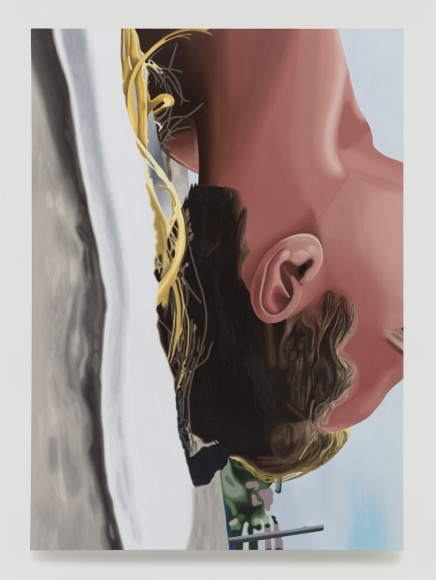Sea Change explores the changing role of the ocean in American Art over the last century. The ocean's vastness, fathomlessness, and its clear surface rhythms and tides have been a major inspiration for many of America's artists, especially for the American modernist painters who shared a growing urge toward a vastness realized in allover rhythmic liquidity. Whether it is depicted as subject, as underlying metaphor for painting, or as both, the ocean's eminence is such that much of the history of American Art since the mid-nineteenth century can be seen as reflections of - and on - its depths.
Organized by guest curator Klaus Kertess, the exhibition includes thirty-two works of art - including paintings, sculpture, and drawings - which survey the confluence of American Art and the ocean. Sea Change includes the high drama of Winslow Homer's ocean and the mystical rhythms of Albert Pinkham Ryder's ocean turbulence. The early modernist, John Marin, sought analogies between the flow of his paint and that of his favorite subject, the ocean; and Marin's work became important to the Abstract Expressionism of Jackson Pollock, Lee Krasner, and Willem de Kooning, all of whom were deeply affected by the ocean after moving to the East End. Conjunctions of ocean and paint continued in the work of Joan Mitchell, Jane Wilson, and Malcolm Morley.
The future Abstract Expressionists and Surrealists often drew parallels between the realms of the unconscious and the underwater -- a kind of mytho-poetic marine biology pursued first by Mark Rothko, then Alfonso Ossorio and more recently by Carroll Dunham. Frank Stella has looked to the saga of Moby Dick in the creation of one of his most ambitious series and younger artists such as Frank Moore look back to Nineteenth-Century luminism, bringing with them new ecological concerns.
Other artists, many of whom did or currently do work on Eastern Long Island, will also be included in the exhibition: James Brooks, Ralph Albert Blakelock, Peter Cain, Vija Celmins, Joseph Cornell, Max Ernst, Adolph Gottlieb, Marsden Hartley, Martin Heade, Mary Heilmann, Roy Lichtenstein, Fairfield Porter, and Man Ray. There will also be a wall drawing by Raymond Pettibon. Sea Change is made possible through generous support from The L & L Foundation, The Cowles Charitable Trust, William Rosenwald Family Fund Inc., Mr. and Mrs. Robert M. Rubin, the Herman Goldman Foundation, Helene and Whitney Stevens, the Edward John Noble Foundation, the Robert Lehman Foundation, Paul F. Walter, the C.A.L. Foundation, and the Evan M. Frankel Foundation.
The Parrish Art Museum, housed in an Italianate structure built in 1898, is dedicated to the collection, preservation, interpretation, and dissemination of American art and art of the region. The collection is internationally recognized for its holdings of William Merritt Chase and Fairfield Porter. The Museum presents a wide range of changing exhibitions and innovative educational programs, serving as a vital cultural resource for the East End of Long Island and neighboring communities.

